 Stacked doughnuts and “damn fine coffee” welcomed a small but eager group of visitors Thursday morning to the World Forestry Center. These die-hard fans had traveled — at least one from out of state — to see the log. But not just any log. This lump of ponderosa pine, hand selected by David Lynch, is the most famous prop from his cult classic TV series, “Twin Peaks.” It was lovingly carried by actress Catherine Coulson, who portrayed the wise and mysterious Margaret “The Log Lady” Lanterman on the show. The pop-up exhibit, “What the Log Saw: Honoring the legacy of Catherine ‘The Log Lady’ Coulson,” celebrates both the on-screen character and the woman who portrayed her, while making connections between “The Log Lady” and sustainable forestry practices. …Coulson’s daughter, Zoey Yinger of Portland, approached the World Forest Center in January about displaying the log after the devastating Los Angeles wildfires.
Stacked doughnuts and “damn fine coffee” welcomed a small but eager group of visitors Thursday morning to the World Forestry Center. These die-hard fans had traveled — at least one from out of state — to see the log. But not just any log. This lump of ponderosa pine, hand selected by David Lynch, is the most famous prop from his cult classic TV series, “Twin Peaks.” It was lovingly carried by actress Catherine Coulson, who portrayed the wise and mysterious Margaret “The Log Lady” Lanterman on the show. The pop-up exhibit, “What the Log Saw: Honoring the legacy of Catherine ‘The Log Lady’ Coulson,” celebrates both the on-screen character and the woman who portrayed her, while making connections between “The Log Lady” and sustainable forestry practices. …Coulson’s daughter, Zoey Yinger of Portland, approached the World Forest Center in January about displaying the log after the devastating Los Angeles wildfires.

 BINGEN, Washington — A plywood mill in the southern Washington city of Bingen will close next month and lay off all 81 workers, the plant’s operator said Thursday. The SDS facility has been operating — with occasional stoppages — since 1949. It uses older equipment, according to Wilkins, Kaiser & Olsen, which was part of a consortium of firms that acquired the mill in 2021. “Regrettably, the long-term challenges and the magnitude of the required investment render continued operation unsustainable,” the mill’s operators said. An adjacent stud mill, planer mill and marine facility will continue operating. Bingen is a small city just across the Columbia River from Hood River. WKO and an affiliated business, Mt. Hood Forest Products, are adding 60 full-time positions to increase their output by 35%. The firms said they will consider hiring some of the laid-off workers.
BINGEN, Washington — A plywood mill in the southern Washington city of Bingen will close next month and lay off all 81 workers, the plant’s operator said Thursday. The SDS facility has been operating — with occasional stoppages — since 1949. It uses older equipment, according to Wilkins, Kaiser & Olsen, which was part of a consortium of firms that acquired the mill in 2021. “Regrettably, the long-term challenges and the magnitude of the required investment render continued operation unsustainable,” the mill’s operators said. An adjacent stud mill, planer mill and marine facility will continue operating. Bingen is a small city just across the Columbia River from Hood River. WKO and an affiliated business, Mt. Hood Forest Products, are adding 60 full-time positions to increase their output by 35%. The firms said they will consider hiring some of the laid-off workers. SALEM, Oregon — The Oregon Senate on Monday passed a bill to establish a lumber-grading pilot training pilot program. “This bill opens the door for small sawmill operators to participate in local housing solutions,” said Sen. Todd Nash, R-Enterprise, the bill’s sponsor. “Forty years ago, Eastern Oregon had 69 mills. Today, only seven remain. This is a practical step to support rural economies and increase housing options using locally sourced materials.” Senate Bill 1061, otherwise known as the Oregon Forests to Homes Act, would operate through Oregon State University’s Extension Service, in partnership with the Department of Consumer and Business Services. …Once certified as a grader, a mill owner could sell his lumber directly to a builder. Certified small sawmill operators will be able to sell lumber directly to homeowners or their agents for use in single-family homes or duplexes.
SALEM, Oregon — The Oregon Senate on Monday passed a bill to establish a lumber-grading pilot training pilot program. “This bill opens the door for small sawmill operators to participate in local housing solutions,” said Sen. Todd Nash, R-Enterprise, the bill’s sponsor. “Forty years ago, Eastern Oregon had 69 mills. Today, only seven remain. This is a practical step to support rural economies and increase housing options using locally sourced materials.” Senate Bill 1061, otherwise known as the Oregon Forests to Homes Act, would operate through Oregon State University’s Extension Service, in partnership with the Department of Consumer and Business Services. …Once certified as a grader, a mill owner could sell his lumber directly to a builder. Certified small sawmill operators will be able to sell lumber directly to homeowners or their agents for use in single-family homes or duplexes.

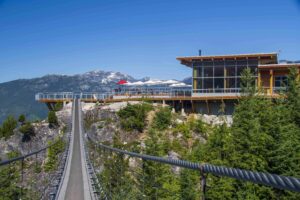 Material intelligence refers to how materials perform, adapt, and interact with ecological and cultural systems. It considers howstone, steel, or timber respond to intertangled forces, how those materials are sourced and assembled, and how they persist after demolition. Designers are centering material intelligence in constructing our cities in a generation of environmental uncertainty and strained supply chains. Few materials embody this shift as vividly as cross-laminated timber (CLT). By layering and bonding planks into structural panels, CLT offers strength, fire resistance, and a significantly lower carbon footprint than concrete or steel. Across Europe and Canada, mass timber has emerged as a centerpiece of decarbonized construction. Yet in the United States, progress has moved more slowly. Developers hesitate. Codes trail behind innovation. Conventional materials still dominate the urban skyline.
Material intelligence refers to how materials perform, adapt, and interact with ecological and cultural systems. It considers howstone, steel, or timber respond to intertangled forces, how those materials are sourced and assembled, and how they persist after demolition. Designers are centering material intelligence in constructing our cities in a generation of environmental uncertainty and strained supply chains. Few materials embody this shift as vividly as cross-laminated timber (CLT). By layering and bonding planks into structural panels, CLT offers strength, fire resistance, and a significantly lower carbon footprint than concrete or steel. Across Europe and Canada, mass timber has emerged as a centerpiece of decarbonized construction. Yet in the United States, progress has moved more slowly. Developers hesitate. Codes trail behind innovation. Conventional materials still dominate the urban skyline.
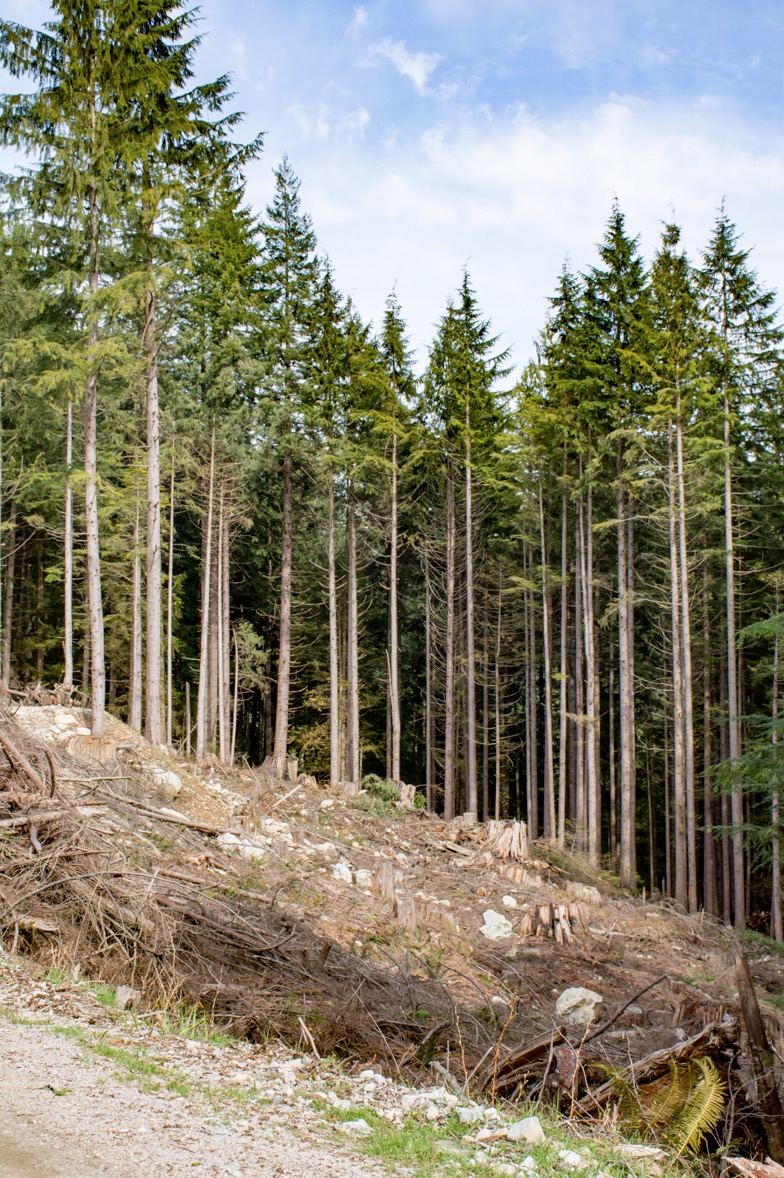 NASELLE, Wash. — One self-service library, high school, and grocery store serve the 519 people of Naselle, Washington. The piles of felled logs along the roadsides dwarf the passing cars, signaling to drivers that this town was built on logging. Many Naselle residents have family roots in the forestry sector, allowing them to be intimately familiar with its demands. They also do not often push back on timber harvests that pose no threat to endangered species or their habitats. But an upcoming harvest will fell trees surrounding one of two creeks that supply the town’s water: this is where most residents draw the line. …The Washington State Department of Natural Resources (DNR) will auction off 105 acres of state-owned forest in Naselle on May 29 after they determined the area was suitable for harvest. The revenue from the highest bid will go to UW. …UW received approximately $20 million from the DNR from 2020 to 2024, $8.6 million of which was from timber sales.
NASELLE, Wash. — One self-service library, high school, and grocery store serve the 519 people of Naselle, Washington. The piles of felled logs along the roadsides dwarf the passing cars, signaling to drivers that this town was built on logging. Many Naselle residents have family roots in the forestry sector, allowing them to be intimately familiar with its demands. They also do not often push back on timber harvests that pose no threat to endangered species or their habitats. But an upcoming harvest will fell trees surrounding one of two creeks that supply the town’s water: this is where most residents draw the line. …The Washington State Department of Natural Resources (DNR) will auction off 105 acres of state-owned forest in Naselle on May 29 after they determined the area was suitable for harvest. The revenue from the highest bid will go to UW. …UW received approximately $20 million from the DNR from 2020 to 2024, $8.6 million of which was from timber sales.  EVERGREEN, Colo. — Crews with Jefferson County Open Space (JCOS) are working to reduce a spike in pine beetles in ponderosa pine trees at an Evergreen park. When the bark of infected trees is pulled back at Elk Meadow Park, the problem is clear. Pine beetles burrow into the trees and lay their larva under the bark. The larva live right on top of the living tissue of the tree, suck up the nutrients and end up killing the tree. They then pupate, turn into adults and fly off to the next tree. …”We are totally OK with a few trees being killed from the pine beetle that creates variable habitat for our wildlife species, and so at a small scale, mountain pine beetle is a good thing,” Steve Murdock, the interim manager of JCOS’ Natural Resource Stewardship. said. However, the numbers that Colorado communities, including Jefferson County, are seeing are well above what would be beneficial for a forest.
EVERGREEN, Colo. — Crews with Jefferson County Open Space (JCOS) are working to reduce a spike in pine beetles in ponderosa pine trees at an Evergreen park. When the bark of infected trees is pulled back at Elk Meadow Park, the problem is clear. Pine beetles burrow into the trees and lay their larva under the bark. The larva live right on top of the living tissue of the tree, suck up the nutrients and end up killing the tree. They then pupate, turn into adults and fly off to the next tree. …”We are totally OK with a few trees being killed from the pine beetle that creates variable habitat for our wildlife species, and so at a small scale, mountain pine beetle is a good thing,” Steve Murdock, the interim manager of JCOS’ Natural Resource Stewardship. said. However, the numbers that Colorado communities, including Jefferson County, are seeing are well above what would be beneficial for a forest.
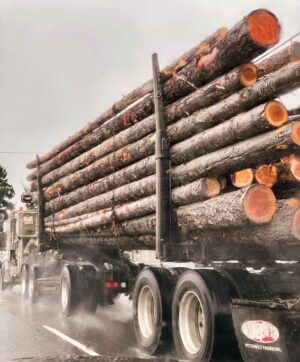

 Oregon lawmakers appear likely to pass a bill that encourages college-credit agriculture and forestry classes in high schools, though some have doubts about its effectiveness. Senate Bill 784 would require the development of statewide standards for “dual credit” courses in these subjects, which is intended to make such classes more widely available, especially in rural areas. “Many students are eager to pursue careers in agriculture, forestry and natural resources but they need exposure and seamless pathways to higher education and industry jobs,” said Sen. Todd Nash, R-Enterprise, the bill’s chief co-sponsor. …More than 7,400 students are enrolled in natural resource programs at Oregon’s universities, showing there’s a demand for such education, so SB 784 would be a “smart investment” in the state’s future workforce, said Rep. Bobby Levy, R-Echo, the bill’s chief co-sponsor.
Oregon lawmakers appear likely to pass a bill that encourages college-credit agriculture and forestry classes in high schools, though some have doubts about its effectiveness. Senate Bill 784 would require the development of statewide standards for “dual credit” courses in these subjects, which is intended to make such classes more widely available, especially in rural areas. “Many students are eager to pursue careers in agriculture, forestry and natural resources but they need exposure and seamless pathways to higher education and industry jobs,” said Sen. Todd Nash, R-Enterprise, the bill’s chief co-sponsor. …More than 7,400 students are enrolled in natural resource programs at Oregon’s universities, showing there’s a demand for such education, so SB 784 would be a “smart investment” in the state’s future workforce, said Rep. Bobby Levy, R-Echo, the bill’s chief co-sponsor.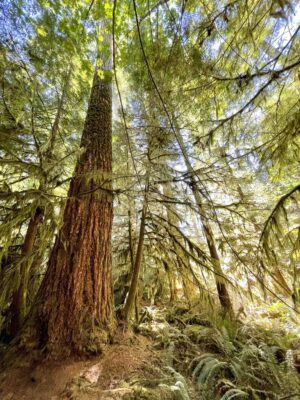 SEATTLE — Recent controversy over the management of Washington’s older state-owned forests has been dominated by an either/or framework: Either we clear-cut these tracts or prevent any harvest at all. Cut it all now or don’t cut any, ever? The human brain loves to dichotomize, but this type of either/or thinking doesn’t work in the woods. Ecologically, economically and culturally, our forests are too complex. Ecologically, climate change is altering our forests rapidly and radically. …Economically, rural areas in Washington state are a microcosm of a pattern that is global in scope. …Cultural values need to be considered as well. …We have to implement a broad array of management models and tools. Instead of re-fighting the 1980s War in the Woods and practicing lawsuit-driven forestry, we need to create flexible, forward-looking practices that will support the health of our forests and rural communities in a time of rapid change.
SEATTLE — Recent controversy over the management of Washington’s older state-owned forests has been dominated by an either/or framework: Either we clear-cut these tracts or prevent any harvest at all. Cut it all now or don’t cut any, ever? The human brain loves to dichotomize, but this type of either/or thinking doesn’t work in the woods. Ecologically, economically and culturally, our forests are too complex. Ecologically, climate change is altering our forests rapidly and radically. …Economically, rural areas in Washington state are a microcosm of a pattern that is global in scope. …Cultural values need to be considered as well. …We have to implement a broad array of management models and tools. Instead of re-fighting the 1980s War in the Woods and practicing lawsuit-driven forestry, we need to create flexible, forward-looking practices that will support the health of our forests and rural communities in a time of rapid change.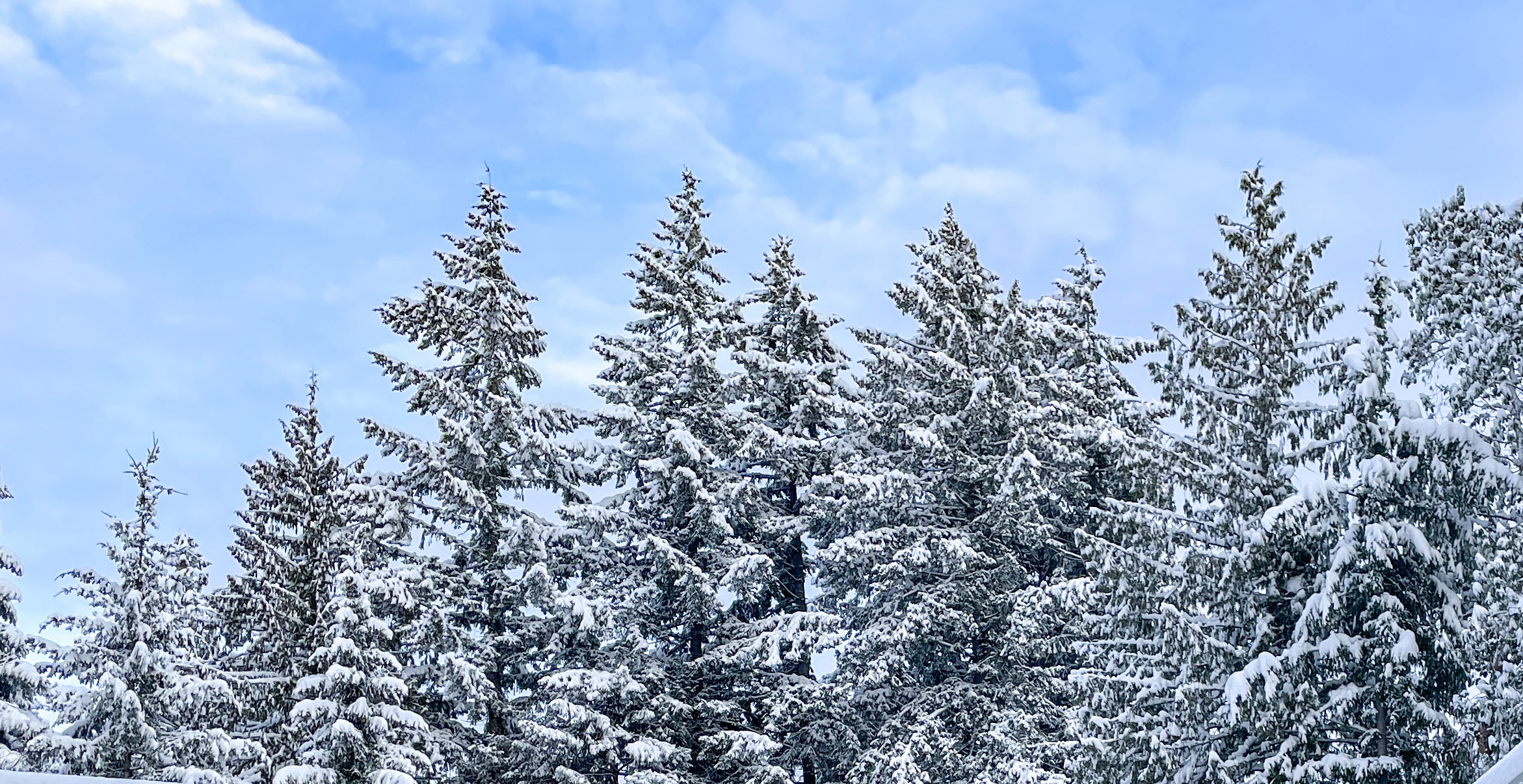 The Alaska Division of Forestry & Fire Protection (DOF) is working with the Anchorage Fire Department (AFD) Wildfire Division to implement a shaded “fuel break” in the Anchorage Hillside area extending from Hilltop Ski Area Road to Prospect Drive. Known as the East-West Connector, this project was scheduled to begin May 5 and represents a renewed effort to reduce wildfire risk through coordinated mitigation work across the Municipality of Anchorage. Wildfire Division Chief, Anchorage Fire Department, Jon Glover shared this statement: “The collaboration between the State of Alaska Division of Forestry & Fire Protection and the Anchorage Fire Department on the East-West Connector shaded fuel break represents exactly the kind of partnership our community needs. This project is more than a line on a map, it’s a commitment to proactive wildfire mitigation and public safety. Together, we’re building resilience and delivering long-term value to the residents we serve.”
The Alaska Division of Forestry & Fire Protection (DOF) is working with the Anchorage Fire Department (AFD) Wildfire Division to implement a shaded “fuel break” in the Anchorage Hillside area extending from Hilltop Ski Area Road to Prospect Drive. Known as the East-West Connector, this project was scheduled to begin May 5 and represents a renewed effort to reduce wildfire risk through coordinated mitigation work across the Municipality of Anchorage. Wildfire Division Chief, Anchorage Fire Department, Jon Glover shared this statement: “The collaboration between the State of Alaska Division of Forestry & Fire Protection and the Anchorage Fire Department on the East-West Connector shaded fuel break represents exactly the kind of partnership our community needs. This project is more than a line on a map, it’s a commitment to proactive wildfire mitigation and public safety. Together, we’re building resilience and delivering long-term value to the residents we serve.” Taking aim at “climate ideologies antithetical to the American way of life,” President Donald Trump’s
Taking aim at “climate ideologies antithetical to the American way of life,” President Donald Trump’s 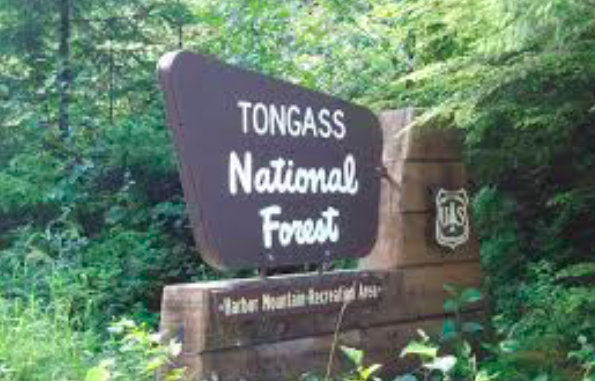
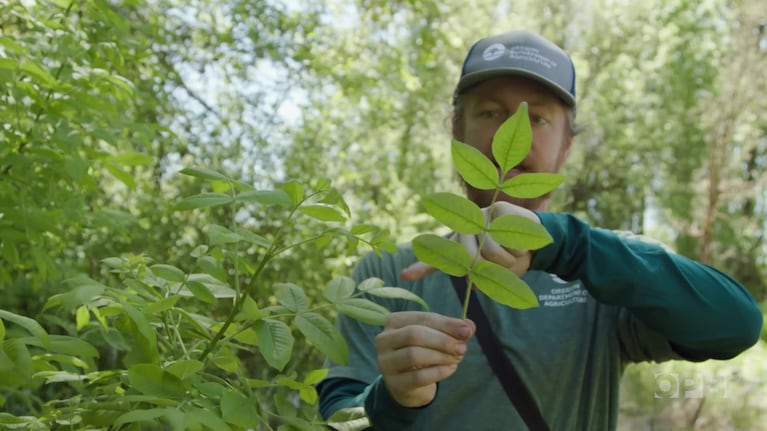

 The Washington State Department of Natural Resources recently began a multi-faceted forest restoration project across approximately 150 acres of the Mount Baker-Snoqualmie National Forest near Verlot. The Pilchuck Restoration Project is led by the Department of Natural Resources (DNR) Federal Lands Program under the agency’s Good Neighbor Authority agreement with the USDA Forest Service. Established in 2014, the GNA allows DNR to leverage its resources with federal and local partners to perform a variety of restoration activities on federal lands. Operators are following a carefully designed prescription focused on thinning out the small-diameter, younger trees that, due to past management practices, are overcrowding tree stands to the detriment of the larger, older trees.
The Washington State Department of Natural Resources recently began a multi-faceted forest restoration project across approximately 150 acres of the Mount Baker-Snoqualmie National Forest near Verlot. The Pilchuck Restoration Project is led by the Department of Natural Resources (DNR) Federal Lands Program under the agency’s Good Neighbor Authority agreement with the USDA Forest Service. Established in 2014, the GNA allows DNR to leverage its resources with federal and local partners to perform a variety of restoration activities on federal lands. Operators are following a carefully designed prescription focused on thinning out the small-diameter, younger trees that, due to past management practices, are overcrowding tree stands to the detriment of the larger, older trees.
 A big change could be coming to U.S. wildlife conservation policy. In mid-April, the National Oceanic and Atmospheric Administration and U.S. Fish and Wildlife Service announced a proposal to change how the term “harm” would be defined in the Endangered Species Act. …According to Paula Swedeen, policy director at Conservation Northwest, the goal of the change is to bring the definition of “harm” in the ESA closer to what the Trump administration believes is its originally-intended meaning. …Washington state has its own conservation plans that are already in place on state lands. According to Swedeen, there’s reason to think that the changes to the ESA won’t impact those too much. …According to Swedeen, the spotted owl is one of the best examples of how endangered species could be put at risk by the proposed new ESA reading. …changes could also impact other endangered species in Washington, like the grizzly bear
A big change could be coming to U.S. wildlife conservation policy. In mid-April, the National Oceanic and Atmospheric Administration and U.S. Fish and Wildlife Service announced a proposal to change how the term “harm” would be defined in the Endangered Species Act. …According to Paula Swedeen, policy director at Conservation Northwest, the goal of the change is to bring the definition of “harm” in the ESA closer to what the Trump administration believes is its originally-intended meaning. …Washington state has its own conservation plans that are already in place on state lands. According to Swedeen, there’s reason to think that the changes to the ESA won’t impact those too much. …According to Swedeen, the spotted owl is one of the best examples of how endangered species could be put at risk by the proposed new ESA reading. …changes could also impact other endangered species in Washington, like the grizzly bear